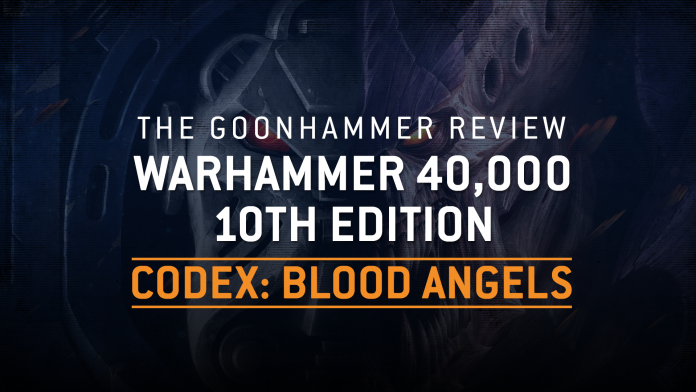In the 9th Edition of Codex: Blood Angels, the Crusade rules were all about your noble and graceful Sons of Sanguinius being one step away from a bad cheese-induced daydream about some chap called Horus, having the Red Mist descend, and then suddenly finding themselves wearing all black. No longer inflicted with the desire to write terrible poetry, they would instead want to fling themselves forward in battle and give those Horus-looking chaps a right seeing to, not caring to ask about why there are now so many of him running around and why they green skin, pointy ears, a robotic body, or whatever.
What actually happened was your Crusade Roster was always a few poor dice rolls away from a very bad time. Thanks to the old Flaw mechanics, your troops could lose any XP gained from the previous battle along with another D6 XP just to kick them while they were down. The characters and dreadnoughts were even worse off: they would find themselves in the Death Company, one Out of Action test away from being removed from your roster completely. In its defence, this was an awesome mechanic with plenty of narrative hooks and style…it just hurt when you lost your fully upgraded Chief Librarian and all associated abilities, Relics, Warlord Traits, etcetera.

Now that we’re here in 10th Edition, though, things have changed. While the Flaw is still kicking around, it’s no longer the main course, but instead serves as an optional side dish to a straightforward continuation of the Oathsworn Campaign system found in Codex Space Marines and Codex Dark Angels, offering three unique campaigns that focus on three different aspects of the Blood Angels.
We’d like to thank Games Workshop for providing us with a preview copy of the book for review purposes.
The Flaw
(Beanith: Or Expiry Date, if you’re feeling mean.)
The Flaw still represents the doom that awaits all Sons of Sanguinius that fall into its grip, but now you can choose when your units take those last remaining steps into the arms of the Death Company by using the Damned Souls requisition. As a bonus, not only can you consign Characters and Dreadnoughts to the Death Company, you can also use the requisition on Infantry units. Regardless of what unit you use it on, it’ll keep any XP and Battle Honours it had before you swapped it out for a black-armoured equivalent. You’ll want to use this requisition on higher-ranked units, since Death Company units still can’t gain XP, ranks or Battle Honours. This gives you a reason to move more experienced units over to the Death Company, rather than just using fresh units.
And while they may lose access to new Battle Honours, what they gain is access to the incredibly powerful Death Company-specific Battle Scars that replace the normal table. They’re also a lot more likely to get them, since they’ll have to take an Out of Action test after every game, even if they manage to survive. And if they did bite the dust, they now fail the Out of Action test on a 1 or 2.

You might think that this is harsh, and it is, but you actually want these scars because they make your ebon-clad angels extra mean on the table. For instance, while Consumed by Rage makes it so your unit can never fall back, even if it’s under the supervision of a Chaplain, they’ll also gain an additional attack on all their melee weapons unit after a Charge move. Visions of Bloodshed gives the unit the Scout 6” ability, at the cost of being forced to take a Battle-shock test every Command Phase. (Beanith: I have underlined, italicised and bolded the word “every” because this means it’s both your and your opponent’s Command phase for those extra bonus chances at your squad of maniacs running around with zero Objective Control and no fun Stratagem support for a round.) Finally, Inured to Agony makes them even more likely to fail Out of Action test (they’ll fail on a result of 1-3), but their Feel No Pain increases to a 5+ in the bargain, making them that much tougher on the table.
None of these Battle Scars can be removed from a unit by any means at all, and even your kind, caring Campaign managers have been told not to even try it. And, as usual, once your Death Company unit has managed to collect all three battle scars, they are one final failed Out of Action test away from an appointment for a rather severe haircut by Astorath (Beanith: he always takes a lot more off the top than you’re comfortable with) and are removed from your Order of Battle entirely.
The Sons of Sanguinius Oathsworn Campaigns
Your choice of which Oathsworn Campaign to embark on will depend on your roster and playstyle. Each one focuses on a different aspect of the Sons of Sanguinius, offering unique ways to generate the Honour points needed to unlock the unique Angels Ascendant upgrades or the existing Chapter Command and Assignment and Promotions from Codex Space Marines, if you prefer them. Each Campaign comes with a Requisition and a choice of three bonus Agendas to field alongside your usual two.
Legacy of the Black Rage
Beanith: Take a wild guess on who this one is for; if you get it wrong then I have a bridge for sale at a bargain price just for you.
This is, of course, the Oathsworn Campaign for those currently mustering a Crusade army with plenty of cranky Death Company on hand. Descent into Madness allows you to choose a unit of Death Company without any of their fun Battle Scars and immediately grant them two. Handy for those blessed at not failing Out of Action tests, but you can only use it once per Oathsworn Campaign.

For the Bonus Agendas, there’s Fallen Heroes which gives you an Honour point for each of your Death Company units destroyed in battle. Fury of the Lost gives your opponent the fun task of choosing which five of their units they would like to see you try and destroy with your Death Company units. Bag two of the five to earn three Honour points. Finally, Of Wrath and Rage is a bit of an odd duck: it rewards 2XP to a Chaplain if the Death Company unit they’re leading destroys an enemy unit in melee. Odd in the sense there’s no Honour points awarded but it’s a good source of XP regardless for the chaps making sure your angry murder hobos pay attention to their lectures on how holding objectives might be helpful.
Angels of Deliverance
This Oathsworn Campaign is mostly centred around the capturing and holding objectives and punishing anyone who comes too close to said objectives. Protectors of the Imperium Nihilus is the ‘choose any objective marker and make it yours’ objective. To help you accomplish this, it’ll become ‘sticky’ if you hold it at the end of any of your Command phases, which should help you keep it locked down and under your control. Hold on to it at the end of the game, and you’ll be rewarded with two Honour points.
The first bonus agenda, Purity Through Bloodshed, lets your units earn 1XP the first time they kill an enemy unit in melee, and if you can manage to rack up 5XP this way you’ll get three Honour points in the bargain. Noble Bearing rewards your characters with 1 XP for standing around objectives, killing other characters, and being the target of an Epic Deed Stratagem. For each character that fulfils all three, gain 1 Honour point. Decisive Assault is a nice and simple ‘kill everything and let the Emperor sort it out’ dealie: if you have more units in your opponent’s deployment zone at the end of the game then they do, gain 2XP for up to three of them. If your Warlord is also there as well, you can one Honour point.
Blade of Sanguinius
The Blood Angels’ final Oathsworn Campaign rewards you for pushing your force to ever-greater feats of heroism. The bespoke requisition, In the Angel’s Name, lets you choose a second bonus agenda for an upcoming battle, with one catch: only your Warlord can accomplish it. If they succeed, you’ll pick up three Honour points on top of whatever else you gain. But the Sons of Sanguinius do not tolerate failure: fall short of completing your objective, and you’ll lose D3 Honour points.
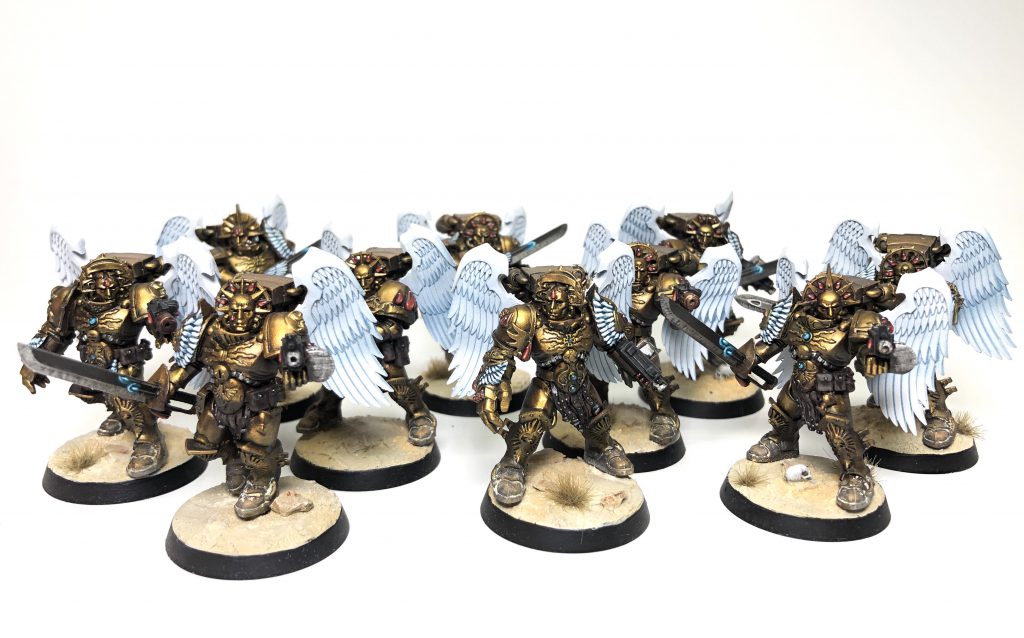
Death From Above is exactly what it sounds like: if a jump pack unit destroys an enemy in the same turn it arrives from Deep Strike, it gains 2XP. Decapitating Strike doesn’t offer XP, but you’ll get 1 Honour point if you managed to kill any enemy characters. If one of them was the Warlord, you’ll get 3XP instead. Rounding out these agendas is Shock Tactics, which lets you give one of your units 1XP if they control an objective that your opponent controlled at the start of your turn. And if you managed to take an objective in your opponent’s deployment zone, you’ll gain 1XP as well.
Angels Ascendant
Once you’ve generated your Honour points, you’ll need something to spend them on. And if you find yourself thinking the options in the Space Marines Codex could use a coat of red paint, there are four options here specific to the Blood Angels and their Successors. Exemplars of the Host is your bargain option at 5 Honour, and it lets you replace a non-character, non-Death Company JUMP PACK unit with a unit of Sanguinary Guard. The new unit will keep its XP, Battle Honours, and Battle Scars, so if you’ve got a unit with an upgrade that would even better if their armour were shinier, this is an option.
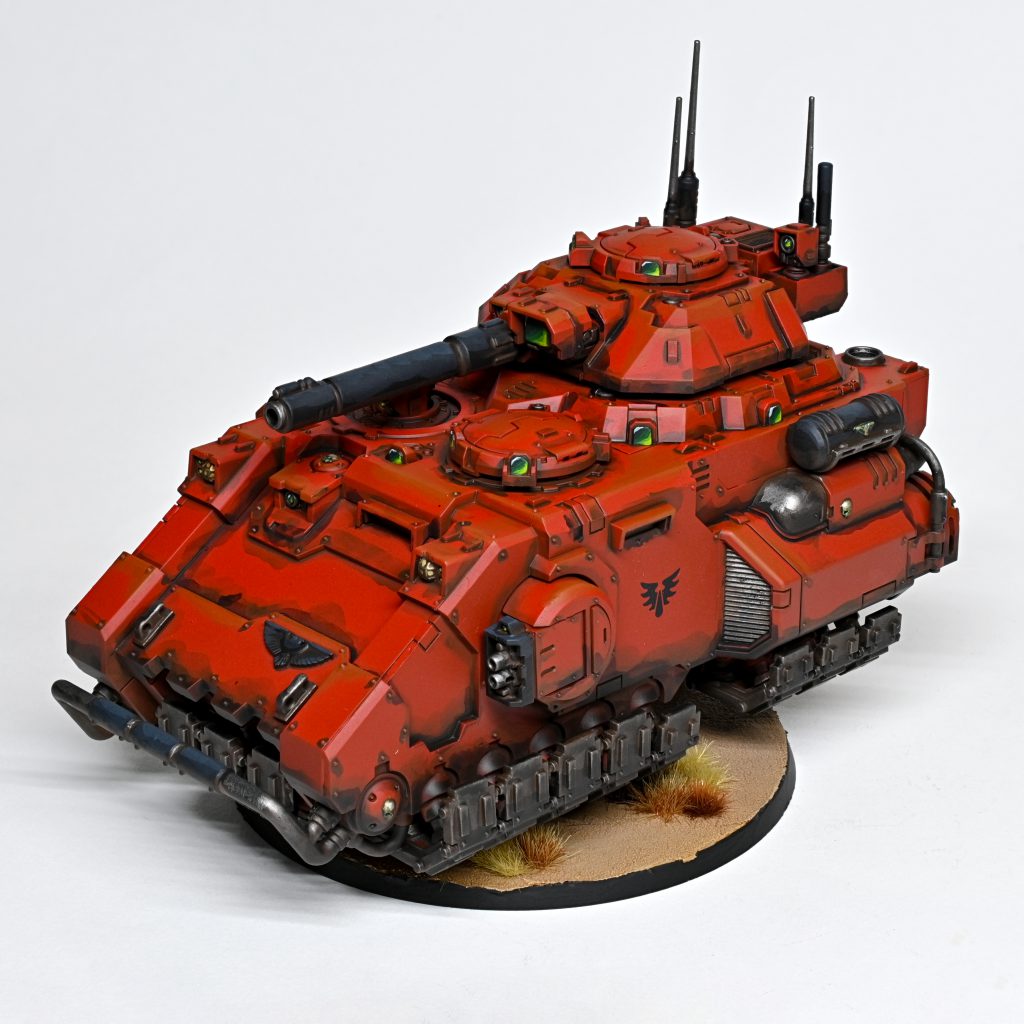
The other three each clock in at 20 Honour, and upgrade one of your characters to the Blood Angels equivalent of Chapter Command. Shield of Baal lets a Captain hand out full wound re-rolls on your Oath of Moment target once per game. This is a potentially devastating upgrade, especially when you can combine it with rules like the Liberator Assault Group detachment. Sanguinary High Priest upgrades a Sanguinary priest to allow him to give his unit an extra attack on their melee weapons once per game. He’s still somewhat limited by the units he’s allowed to join, but stick him in a unit of Assault Intercessors and his unit can be a real problem. Finally, a Chaplain can be upgraded to become the Custodian of the Lost, which allows a unit of Death Company he joins to benefit from a Death Company Battle Scar they don’t have yet for a battle.
Any of these options are potentially interesting, and they combine nicely not only with the rules in your detachments, but also with the Battle Traits and Crusade Relics later in the book to let you build some very cool characters. You’ll have to work to unlock them, but these upgrades are worth the effort.
Agendas
In addition to the Agendas you get from your Oathsworn Campaigns, this book offers four more options to choose from.
For Baal and the Angel! is a bit of a confusing one. At the end of the battle, you add up all the units in your army above half strength and, if that number is less than the number of units in your opponent’s army (not alive, just like what they brought), every living Adeptus Astartes unit gains 1XP, and you can throw in a bonus XP and an Honor Point if you were playing against Chaos or Tyranids. I gotta be honest, I don’t quite understand what they were going for here. If you roll up to the table and your opponent has more units than you, windmill slam this one because you’re bound to get some XP, and if it’s Chaos or Tyranids it’s a free Honor Point even if you get tabled. If they have less, you want units to die? I guess? I suppose it’s supposed to be a self-sacrifice thing, but this feels like an Agenda asking you to table your opponent with extra steps.
Search for the Cure is a pretty strong pick if you’re already bringing a Sanguinary Priest or any type of Apothecary. The Agenda has you do actions on objectives with those units, gaining 1 Honour Point and 2XP each time you do. Not a lot to talk about here, but it is notable that its not limited to objective markers outside your deployment zone, so if there’s a home objective you can at least gain one all-but-guaranteed Honour Point.
Against the Darkness has you select three units from your army during deployment, and if those units kill something and survive until the end of the battle, they’ll gain 2XP if they’re at or above half strength or 1XP if they’re below it. Not a lot to talk about here, it’s a decent Agenda but not really notable.

Liberators From Tyranny is probably our favourite here. At the end of the battle, every unit on an objective gains an XP, if you have more objectives than your opponent you also gain D3 Honour Points, and if you have all the objectives you gain D3+3 Honour Points. Generally speaking, I like these scalable Agendas that really reward you for popping off. If there’s any critique to be had its that there isn’t a ton of risk to this one and it doesn’t really change the way you’re likely to play your missions.
Requisitions
The Sons of Sanguinius also get three Requisitions to play with. Noble Heritage is your “prestige a character” Requisition, giving a Blood Angels Character an extra Battle Honour if they have over 70XP. What’s notable here is that, since it specifies the BLOOD ANGELS keyword, and none of the datasheets in the main Space Marines Codex have that keyword, you can only use this on the Blood Angels-specific characters in this book. Sorry, Librarians, but no bonus Battle Honour for you.
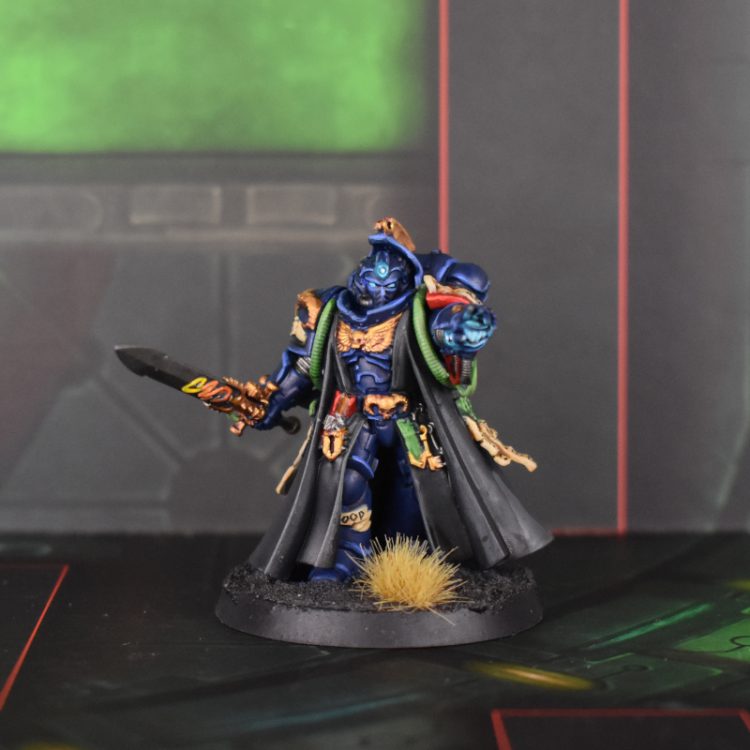
Valour of Angels lets you select a Blood Angels Character that failed an out of action test and Mark them for Greatness. If they killed any models that game, you also gain five Honour Points. This is a weird Requisition in that it offers a huge bonus to a Character for getting their ass beat. And for as big of a boon as the second half offers, you’d think they’d have to do something more heroic than killing a grot or a spore mine.
Finally, Damned Souls is how you can get Death Company units with some Battle Honors running around. For 1RP, you drop a unit from your roster and replace it with its Death Company equivalent. The new unit shows up with the same Battle Honors and Battle Scars as the dropped unit. This is a neat way to have your Death Company feel a bit more interesting, since there’s some real investment there.
Battle Traits
Blood Angels also get access to three tables of Battle Traits for Characters, Jump Pack units, and normal Infantry. (Norman: It’s worth noting that you can roll on these tables even if you don’t have the Blood Angels keyword, so your Space Wolves can technically use this, but you should not do that.)
Character Units
Characters get three entries on their Battle Trait table. Prophetic Gifts is a banger, letting you make a hit, wound, or save roll into a 6 once per fight phase. For most characters, this is a free passed save in the Fight phase, but a model with access to Devastating Wounds could use it to sneak in a few extra mortal wounds. Soulwarden gives you a 6+ Feel No Pain and allows you to target the bearer’s unit with stratagems even if they’re Battle-shocked. This could be particularly interesting in the Liberator Assault Group, allowing you to use the Red Thirst stratagems with impunity, but is a neat trick to have up your sleeves regardless. Finally, Martial Exemplar lets you pick between Lethal Hits, Precision, and Sustained Hits at the start of each Fight phase and apply that to the bearer’s melee weapons. This would be incredibly good if it were just Precision, and the added flexibility only makes it stronger.
Jump Pack Units
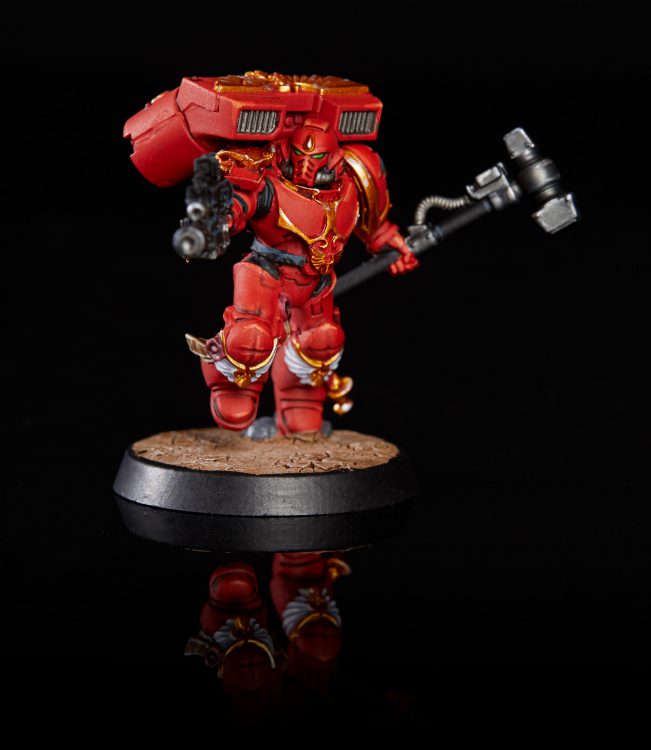
Jump Pack units just get two traits in their table. The first trait Aerial Assault lets you Deep Strike on turn one. If we need to explain why this is good, you probably aren’t a Blood Angels player, but suffice to say that the ability to apply that sort of pressure that early is very strong. If you want to be a real bastard, drop a unit of Inceptors in front of your opponent to pen them in right out of the gate, then capitalize on their limited movement options with the rest of your army. If you’re in the market for something a bit less unusual, Skies of Fury gives you +1 Move, Advance, and Charge. Simple, straightforward, strong. If you have jump pack units, roll on this table early and often, and then do it again: these traits are both incredibly powerful.
Infantry Units
Your normal Infantry also get access to some great options. The Armoury’s Artifice gives you extra AP on critical wounds, which is consistently nifty and combos nicely with the Blood Angels’ rules and the types of lists they like to run. Fury Unbound gives you Hit re-rolls on the charge, handy when you want to throw the unit into something other than your Oath target. Last up is Selfless Valour, lets you use the Heroic Intervention stratagem for free once per battle, turning your unit a very scary counter charge threat, especially if you’re running a Liberator Assault Group.
Crusade Relics
For Crusade Relics, you get the standard spread of Artificer, Antiquity, and Legendary Relics.
For your Antiquity Relics, you have three to choose from. Chalice of Baal gives a Sanguinary Priest the ability to grant their squad Sustained Hits 1. Definitely something to consider if you’re running a Sanguinary Priest, especially if you’ve attached them to something other than a squad of Assault Intercessors (though it’s still great there). Hood of Baal allows a Psyker to reroll wounds on Psychic Attacks. This sounds great in theory, but your only option to put it on is a Librarian and their Psychic attacks are beans, which means that this relic is, in turn, beans. Your final choice in the Artificer category is Valour’s Edge, which gives the bearer’s melee weapons an extra 2 AP as well as Lethal Hits, which can absolutely juice the right profile and turn it into something terrifying.
On the Antiquity side of things you get two relics. First up is the Crown Angelic which forces Battle-shock tests in melee if the bearer is within 3” and the other unit is below starting strength. This one will usually wind up not being worth it without a penalty to the test, but if you manage to make it go off the results could well justify it. Just don’t expect it to put in work on the regular. The third option is Angels Wing, which can only go on a Jump Pack character. It gives the bearer and their unit -1 to be hit and immunity to overwatch, making them significantly more likely to make it into melee, even if they run into a pile of Rubrics with Warpflamers.
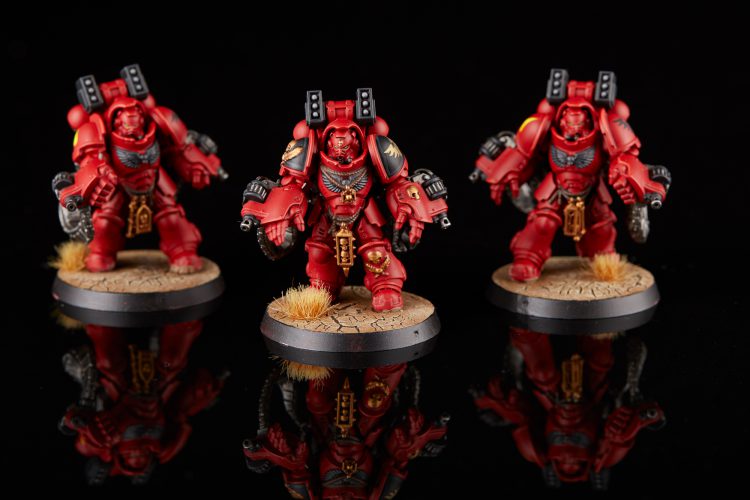
You only get one option for your Legendary Relic, The Encarmine Blade, and it’s a doozy: it gives your character a Sanguinary Guard spear with three extra attacks, an extra pip of damage and AP, and Devastating Wounds. But while this is really strong, it’s not as creative and army-changing as some other factions’ Legendary Relics. That said, it opens you up for a really cool conversion for your Blood Angels Captain, so on balance this one gets a pass. Beanith: It gets a fail from me. No ranged attack like the vastly superior Vortex Grenade? Bah humbug.
Name Generator
It’s like they’ve crammed their weird quasi-Space Latin and Italian names into a blender and called it quits. On the bright side, at least two of the Ninja Turtles snuck in under the alias of Leonid and Donatelus.
Beanith: My Blood Angel is called Arca Oras… he was bullied a lot as a small scout. Children can be so cruel.
Final Thoughts
Condit: If you like Blood Angels and you like the Oathsworn Campaigns from Codex: Space Marines, I’ve got good news for you: you’re probably going to like this book. No longer will all of your games center around the question “How long will it be until my Captain gets really mad and finds himself at the top of Astorath’s shit list?” At least, not unless you want them to.
And that’s the biggest win here: the Sons of Sanguinius finally get to shine in their own right, rather than existing in Crusade solely as victims-in-waiting for the Black Rage. The other rules are fine, too: the Battle Traits include some of the cooler ones on offer this edition, the requisitions and Agendas get the job done, and several of the Crusade Relics are legitimately interesting. But the fact that this book positions the Flaw as merely a single piece of the Chapter’s identity rather than the all-consuming horror that it was in the 9th Edition supplement is a huge win.

Norman: While there was never going to be anything ground breaking since this is just a supplement to what Space Marines already have going on, the rules here are solid and The Flaw system is really cool, especially with the requisition to induct units to the Death Company with Battle Honours. If I have any complaints, it’s that the Agendas don’t really change how you play the game and the Battle Traits and Relics should be tied to Blood Angels armies. Realistically Space Marines should have a caveat to make you add a chapter when you add units to your roster because this sort of thing just opens you up to game breaking combos.
Beanith: It’s a great set of awesome rules for the Sons of Sanguinius. I love the updated Flaw ruleset, you can still ‘doom’ parts of your army to the Black Rage for some cool narrative hooks or just to recycle a unit with one too many battle scars. The Relics were a little meh but the Battle Traits are amazing. I’m almost looking forward to seeing this band of artistically inclined murderous bozos charging across the field towards me again… Almost.
Have any questions or feedback? Drop us a note in the comments below or email us at contact@goonhammer.com. Want articles like this linked in your inbox every Monday morning? Sign up for our newsletter. And don’t forget that you can support us on Patreon for backer rewards like early video content, Administratum access, an ad-free experience on our website and more.
